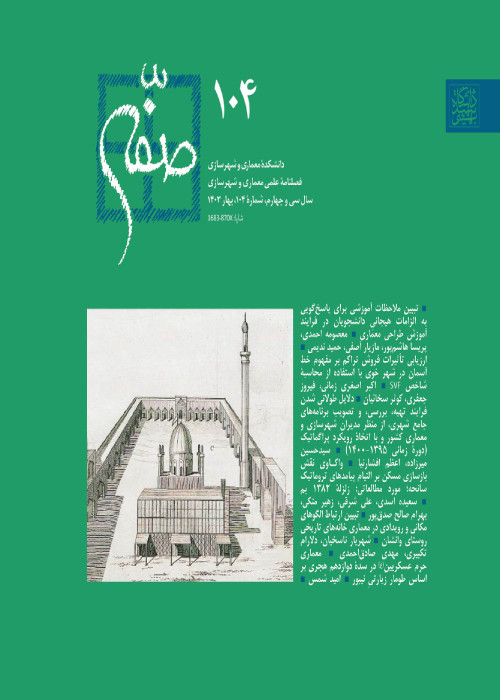The Relationship between Spatial Configuration and Social Interaction in Tehran Residential Environments: Bridging the Gap between Space Syntax and Behaviour Settings Theories
Designing settlements and their formation patterns has always been one of the controversial topics in the field of architecture and planning, but it is the implications of these patterns on forming spatial structures in residential layouts which is the focal point of this research. The main aim of the current paper is to scrutinise Space Syntax theory and criticise its origins and fundamental thoughts. In order to do so, the paper uses computational models of three residential settings in Tehran, Iran. The main question is how deeply is Space Syntax able to predict movements and behavioural patterns of residents in a residential layout. In other words, this research explores whether Space Syntax computational models can fully cover behavioural patterns or does it leave gaps. The hypothesis is that although the configuration of settlements is the basis for movements, it demands Behavioural Settings theory to interpret the behavioural-movement patterns. In order to answer the main question, three relevant residential layouts have been chosen in Tehran: Narmak, Yousef Abad, and Shahrak-e Gharb. Moreover, current situation of these communities in terms of private, semi-private, and public spaces were modelled in the Depth Map software, which is developed by Space Syntax Research Group at UCL. Afterwards, these settings were observed during a four-months period. The subsequent comparison between the results obtained from Depth Map models and observations reveals the gaps between Space Syntax theory and the reality. It reveals that the configuration of residential layouts` has a causal relation with the formation of spatial-physical structure. The integration analysis, based on the Space Syntax methodological-conceptual framework is able to predict the general movement patterns of residents, but when it comes to behavioural patterns, the synomorphy between physics and behaviour can perform a more accurate prediction. The behavioural settings theory by Roger Barker has developed the synomorphy in order to find the adaptations between physical environments and behaviours. Obtained results indicate that spatial-physical structures in the neighbourhoods correspond mainly with the intensity of the behavioural-movement patterns but much less with the shape of their spatial integration. The empirical findings can be considered innovative in light of the fact that Space Syntax studies dealing with ecological psychology in cities are rare and a completely fresh theoretical ground. The research findings nonetheless support the theoretical understanding that the urban environment’s spatial configuration provides a fundamental condition for the movement patterns but barely can offer a good interpretation for the micro level behaviours by the residents.
- حق عضویت دریافتی صرف حمایت از نشریات عضو و نگهداری، تکمیل و توسعه مگیران میشود.
- پرداخت حق اشتراک و دانلود مقالات اجازه بازنشر آن در سایر رسانههای چاپی و دیجیتال را به کاربر نمیدهد.




